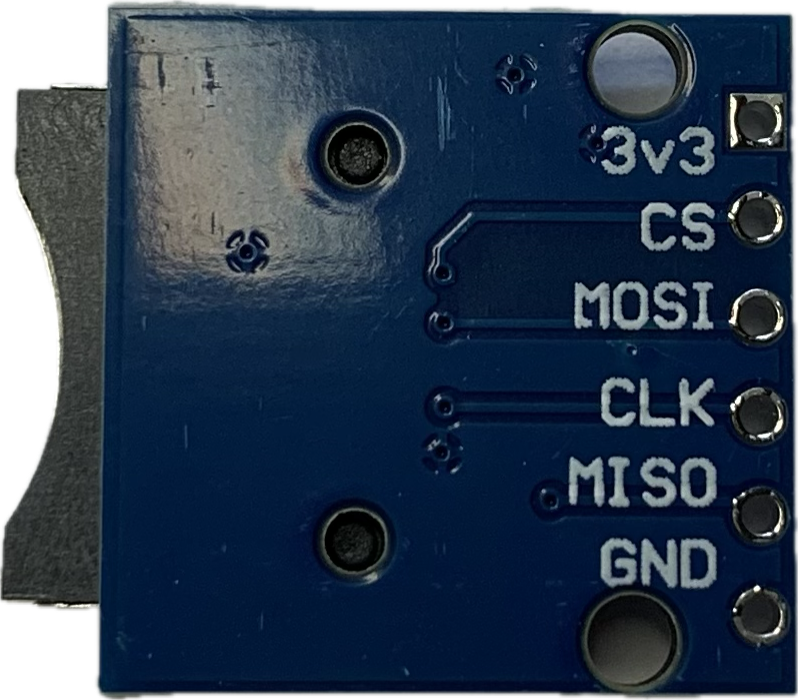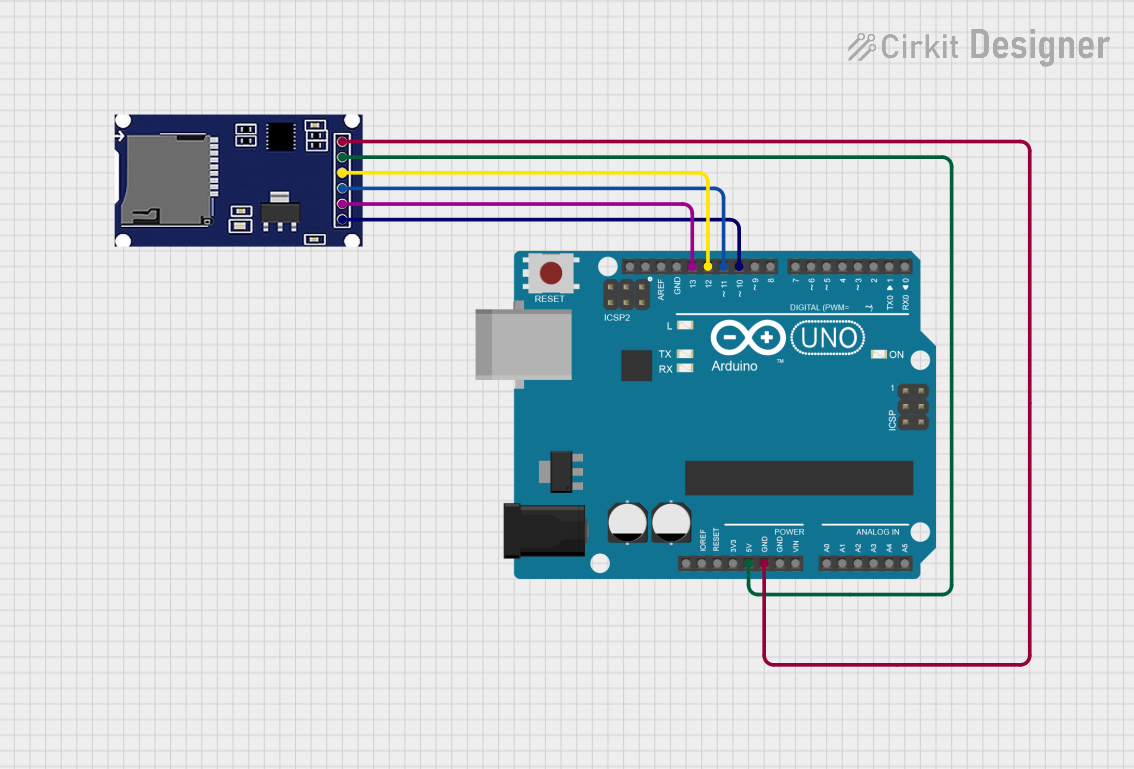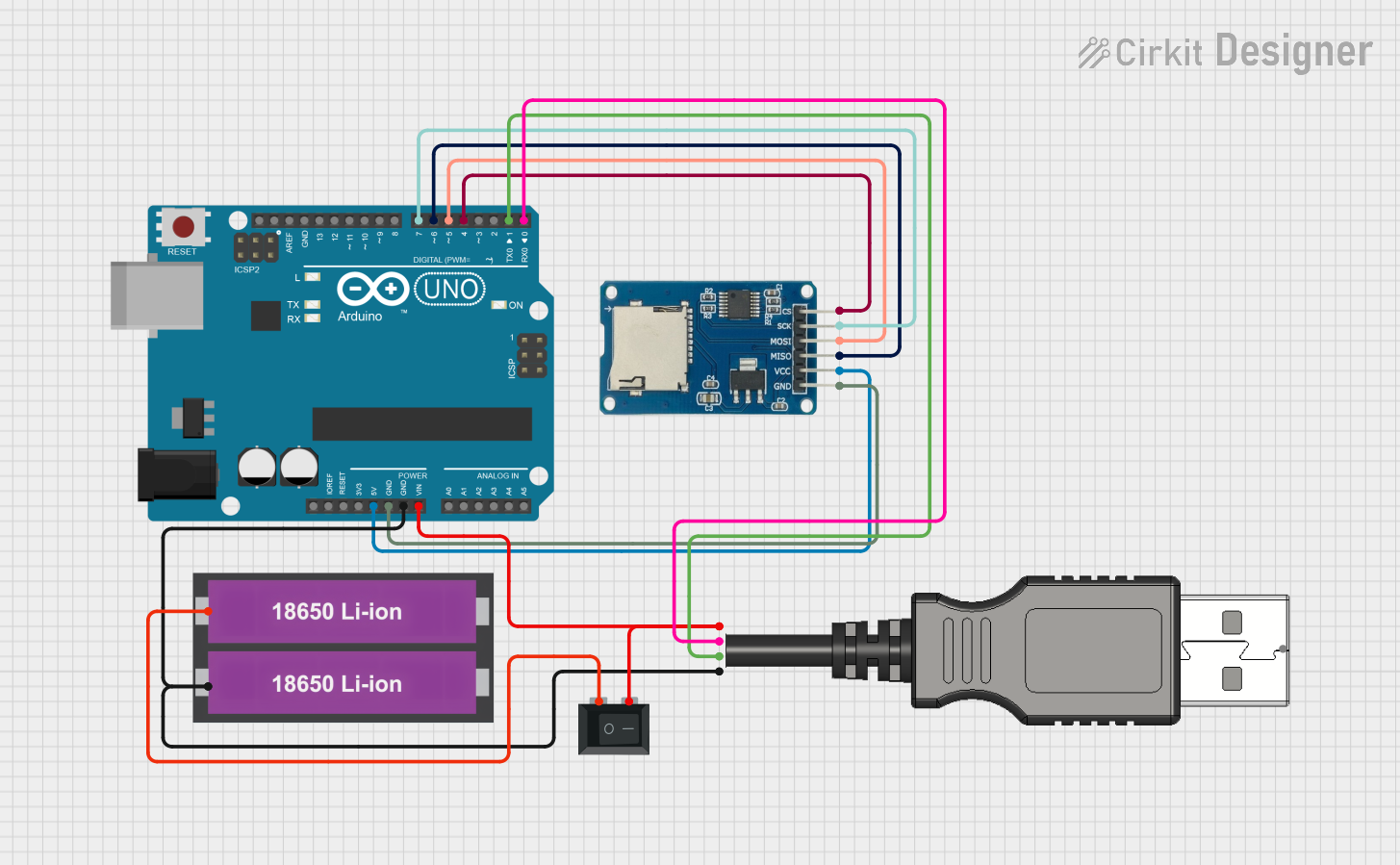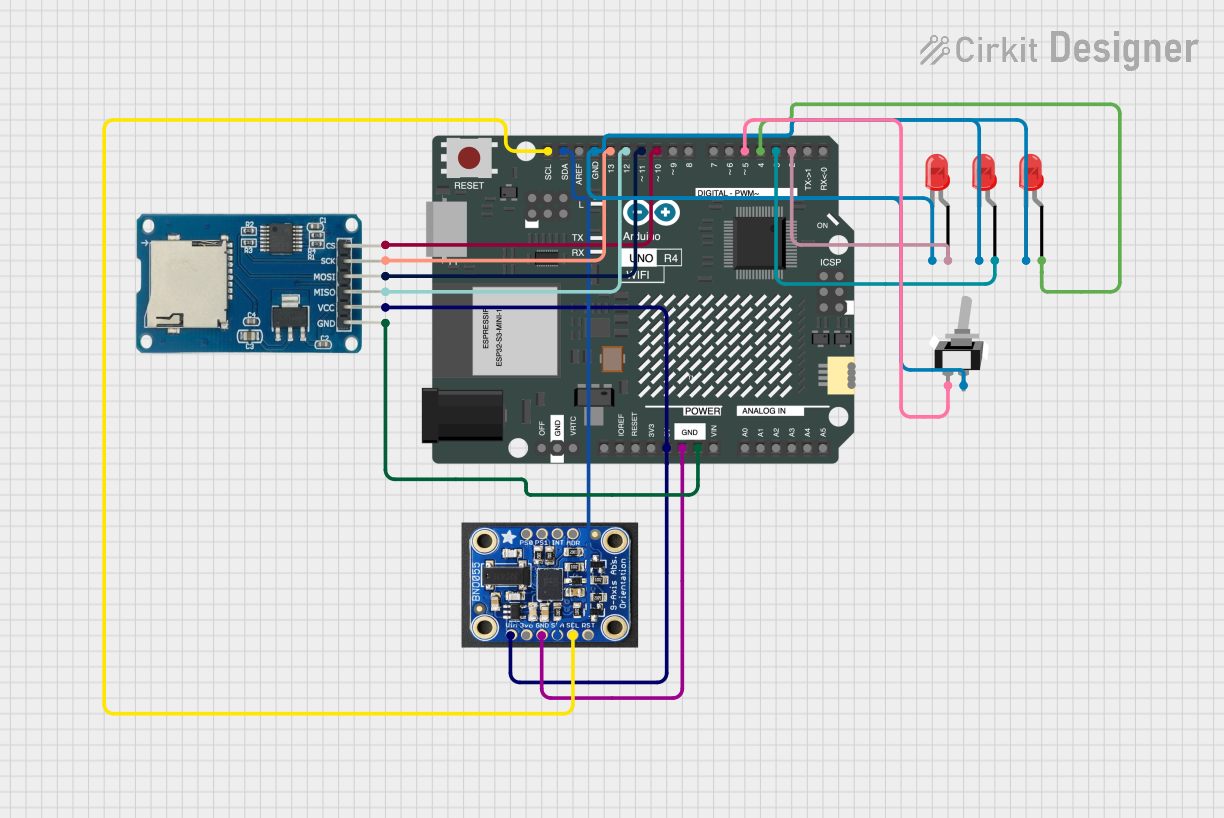
How to Use SD Card reader: Examples, Pinouts, and Specs

 Design with SD Card reader in Cirkit Designer
Design with SD Card reader in Cirkit DesignerIntroduction
The SD Card Reader (Manufacturer: Create idea, Part ID: B0DRWPJ1T5) is a versatile device designed to facilitate the reading and writing of data to and from SD (Secure Digital) memory cards. It is widely used in applications requiring portable storage, such as data logging, multimedia storage, and file transfer. This component is compatible with microcontrollers like Arduino and Raspberry Pi, making it an essential tool for hobbyists and professionals alike.
Explore Projects Built with SD Card reader

 Open Project in Cirkit Designer
Open Project in Cirkit Designer
 Open Project in Cirkit Designer
Open Project in Cirkit Designer
 Open Project in Cirkit Designer
Open Project in Cirkit Designer
 Open Project in Cirkit Designer
Open Project in Cirkit DesignerExplore Projects Built with SD Card reader

 Open Project in Cirkit Designer
Open Project in Cirkit Designer
 Open Project in Cirkit Designer
Open Project in Cirkit Designer
 Open Project in Cirkit Designer
Open Project in Cirkit Designer
 Open Project in Cirkit Designer
Open Project in Cirkit DesignerCommon Applications and Use Cases
- Data logging in IoT devices (e.g., temperature, humidity, or GPS data storage)
- Multimedia storage for audio, video, and image files
- File transfer between devices
- Bootable storage for embedded systems
- Backup and recovery of data from SD cards
Technical Specifications
The following table outlines the key technical details of the SD Card Reader:
| Parameter | Specification |
|---|---|
| Manufacturer | Create idea |
| Part ID | B0DRWPJ1T5 |
| Operating Voltage | 3.3V to 5V |
| Communication Protocol | SPI (Serial Peripheral Interface) |
| Supported Card Types | SD, SDHC, microSD (with adapter) |
| Maximum Clock Speed | 25 MHz |
| Dimensions | 42mm x 24mm x 12mm |
| Operating Temperature | -25°C to 85°C |
Pin Configuration and Descriptions
The SD Card Reader typically has a 6-pin interface for SPI communication. The pinout is as follows:
| Pin | Name | Description |
|---|---|---|
| 1 | VCC | Power supply input (3.3V or 5V, depending on the microcontroller used) |
| 2 | GND | Ground connection |
| 3 | MISO | Master In Slave Out - Data output from the SD card to the microcontroller |
| 4 | MOSI | Master Out Slave In - Data input from the microcontroller to the SD card |
| 5 | SCK | Serial Clock - Clock signal for SPI communication |
| 6 | CS | Chip Select - Used to select the SD card during SPI communication |
Usage Instructions
How to Use the SD Card Reader in a Circuit
- Power Supply: Connect the VCC pin to a 3.3V or 5V power source, depending on your microcontroller. Connect the GND pin to the ground.
- SPI Connections: Connect the MISO, MOSI, SCK, and CS pins to the corresponding SPI pins on your microcontroller.
- Insert SD Card: Insert a formatted SD card (FAT16 or FAT32) into the SD card slot.
- Library Setup: If using an Arduino, install the
SDlibrary from the Arduino IDE Library Manager. - Code Upload: Write and upload code to initialize the SD card and perform read/write operations.
Important Considerations and Best Practices
- Ensure the SD card is properly formatted (FAT16 or FAT32) before use.
- Use level shifters or voltage dividers if your microcontroller operates at 5V logic levels, as SD cards typically operate at 3.3V.
- Avoid removing the SD card while the system is powered on to prevent data corruption.
- Use decoupling capacitors near the VCC pin to stabilize the power supply.
Example Code for Arduino UNO
Below is an example code snippet to initialize the SD card and write data to a file:
#include <SPI.h>
#include <SD.h>
// Define the Chip Select (CS) pin for the SD card reader
const int chipSelect = 10;
void setup() {
// Initialize serial communication for debugging
Serial.begin(9600);
while (!Serial) {
; // Wait for the serial port to connect (for native USB boards)
}
Serial.println("Initializing SD card...");
// Check if the SD card is present and can be initialized
if (!SD.begin(chipSelect)) {
Serial.println("SD card initialization failed!");
return; // Stop further execution if initialization fails
}
Serial.println("SD card initialized successfully.");
// Open a file for writing
File dataFile = SD.open("example.txt", FILE_WRITE);
// Check if the file opened successfully
if (dataFile) {
dataFile.println("Hello, SD card!"); // Write data to the file
dataFile.close(); // Close the file to save changes
Serial.println("Data written to example.txt");
} else {
Serial.println("Error opening file for writing.");
}
}
void loop() {
// Nothing to do here
}
Troubleshooting and FAQs
Common Issues and Solutions
SD Card Initialization Fails
- Cause: Incorrect wiring or unsupported SD card format.
- Solution: Double-check the wiring and ensure the SD card is formatted as FAT16 or FAT32.
File Not Opening
- Cause: Incorrect file name or file system issue.
- Solution: Ensure the file name is 8.3 format (e.g.,
example.txt) and the SD card is properly formatted.
Data Corruption
- Cause: Removing the SD card while the system is powered on.
- Solution: Always power off the system before removing the SD card.
No Response from SD Card Reader
- Cause: Incorrect SPI connections or power supply issues.
- Solution: Verify the SPI connections and ensure the power supply is stable.
FAQs
Q1: Can I use this SD Card Reader with a Raspberry Pi?
A1: Yes, the SD Card Reader can be used with a Raspberry Pi. However, you may need to configure the SPI interface and use appropriate libraries like spidev in Python.
Q2: What is the maximum SD card size supported?
A2: The SD Card Reader supports SD and SDHC cards up to 32GB. Cards larger than 32GB (SDXC) are not supported.
Q3: Can I use this with a 5V microcontroller without level shifting?
A3: It is recommended to use level shifters or voltage dividers to avoid damaging the SD card, as it operates at 3.3V logic levels.
Q4: How do I format my SD card for use with this reader?
A4: Use a computer to format the SD card as FAT16 or FAT32. Avoid using exFAT or NTFS formats, as they are not supported.